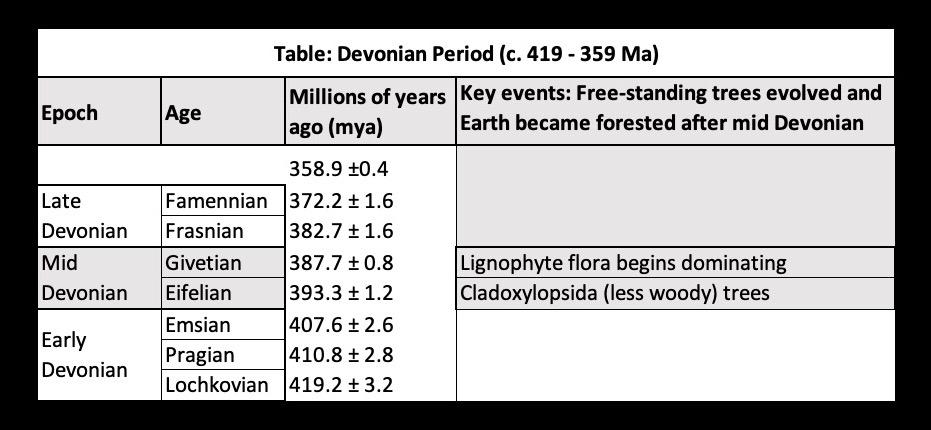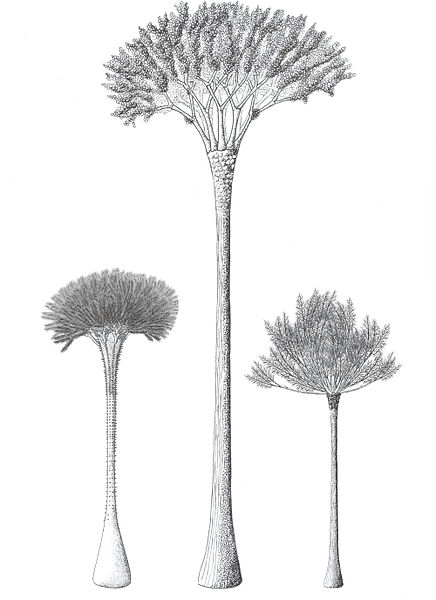A fossilised forest comprising of fossil trees (known as Calamophyton), and vegetation-induced sedimentary structures has been discovered in the high sandstone cliffs along the Devon and Somerset coast of Southwest England. This dates from 390 million years ago which makes it the oldest known fossil forest on Earth.
One of the key events in the history of Earth is afforestation or transition to forested planet following evolution of trees and forests in the Mid–Late Devonian Period, 393–359 million years ago. The tree sized vegetations fundamentally changed the land biosphere in terms of stabilisation of sediments on flood plains, clay mineral production, weathering rates, CO2 drawdown, and the hydrological cycle. These changes had profound impact on the future of Earth.

The earliest free-standing fossil trees belong to the Cladoxylopsida evolved in early Mid-Devonian. The cladoxylopsid trees (calamophyton) were less woody compared to early lignophytes archaeopteridalean (archaeopteris) that evolved later in late Mid-Devonian. From the late Mid-Devonian, the woody lignophytes flora started dominating the land (the lignophytes are vascular plants that produce robust wood through a cambium).
In a recent study, the researchers identified a previously unrecognised early Mid-Dovinian cladoxylopsid forest landscape in the Hangman Sandstone Formation of Somerset and Devon in Southwest England. The site contains free-standing fossil trees or fossil forest dating from 390 million years ago which makes it the oldest fossilised forest known on Earth – about four million years older than the previous record holder fossil forest found in New York State. The study sheds light on the impact of the oldest forests.
The cladoxylopsid trees resembled palm trees but lacked leaves. Instead of solid wood, their trunks were thin and hollow in the centre and their branches were covered in hundreds of twig-like structures that dropped on the forest floor as the tree grew. The trees formed dense forests with very high abundance of plant debris on the floor. There was no growth on the floor as grass had not evolved yet but abundance of droppings by the densely packed trees had a big impact. The debris supported invertebrate life on the floor. The sediments on the floor influenced the flow of the rivers and resilience against floods. This was first time in the history of Earth that tree-driven changes influenced course of rivers and non-marine landscapes of the planet changed forever.
***
Reference:
- Davies N.S., McMahon W.J., and Berry C.M., 2024. Earth’s earliest forest: fossilized trees and vegetation-induced sedimentary structures from the Middle Devonian (Eifelian) Hangman Sandstone Formation, Somerset and Devon, SW England. Journal of the Geological Society. 23 February 2024. DOI: https://doi.org/10.1144/jgs2023-204
***




































